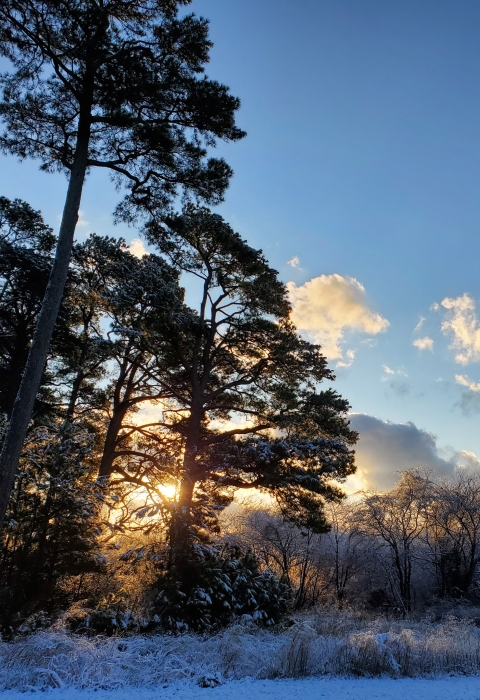What We Do
Wildlife conservation is at the heart of the National Wildlife Refuge System. It drives everything on U.S. Fish and Wildlife Service lands and waters managed within the Refuge System, from the purposes for which a national wildlife refuge national wildlife refuge
A national wildlife refuge is typically a contiguous area of land and water managed by the U.S. Fish and Wildlife Service for the conservation and, where appropriate, restoration of fish, wildlife and plant resources and their habitats for the benefit of present and future generations of Americans.
Learn more about national wildlife refuge is established to the recreational activities offered to the resource management tools used. Using conservation best practices, the Refuge System manages Service lands and waters to help ensure the survival of native wildlife species.
At this refuge, providing optimal habitat for our wildlife requires the use of a variety of management tools. Prescribed fires and mowing can help set back natural succession in the Shrub/Scrub habitats of the refuge. This allows us to provide different age classes of habitat to benefit a wide range of species from grassland species to those that need mature fruit and insect-laden vegetation. Invasive, non-native plant species tend to not be as beneficial to animals as native plant species because they don’t supply the correct fruit or seed type needed by resident wildlife or their fruit comes in at the wrong time of year to benefit migratory animals. For this reason, we have an active invasive species invasive species
An invasive species is any plant or animal that has spread or been introduced into a new area where they are, or could, cause harm to the environment, economy, or human, animal, or plant health. Their unwelcome presence can destroy ecosystems and cost millions of dollars.
Learn more about invasive species management program at this refuge.
To help determine if our efforts are effective, it’s important that our habitats are monitored for productivity and condition using regionally designed inventory and monitoring protocols. Sea level rise and marsh subsidence/accretion are measured using established survey benchmarks within the marshes. Monitoring of various animal and plant species are conducted throughout the refuge to determine the carrying capacity of the habitat, the overall “health” of the habitat, the abundance of species and the effectiveness of management actions.
Management and Conservation
Refuges deploy a host of scientifically sound management tools to address biological challenges. These tools span active water management to wilderness character monitoring, all aimed at ensuring a balanced conservation approach to benefit both wildlife and people. At this field station our conservation tool box includes:
- Planning – Comprehensive Conservation Plan
- Habitat Restoration
- Climate Resilience
- Compatibility Determinations
- Cultural Resources
- Fire Management
- Human Dimensions
- Invasive Species
- Inventory and Monitoring
- Land Acquisition
- Law Enforcement
- Recreation Management
- Species Research
Comprehensive Conservation Planning
The purpose of a comprehensive conservation plan is to specify a management direction for the refuge for the next 15 years. The goals, objectives, and strategies for improving refuge conditions—including the types of habitat we will provide, partnership opportunities and management actions needed to achieve desired conditions – are all described in this document. Since staff at Eastern Shore of Virginia NWR administers Fisherman Island NWR, the Comprehensive Conservation Plan is a combined document covering the two sites. Please email us to request a copy of this document.
Our Services
At this field station we offer the following public services:
Special Use Permit
- Recreation
